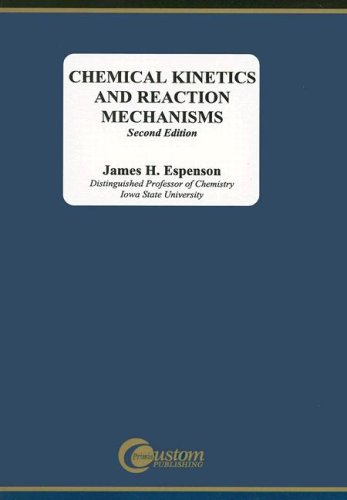Chemical kinetics and reaction mechanisms pdf
Par linville cameron le lundi, juin 8 2015, 23:13 - Lien permanent
Chemical kinetics and reaction mechanisms by James H. Espenson


Chemical kinetics and reaction mechanisms James H. Espenson ebook
ISBN: 0070202605, 9780070202603
Publisher: McGraw-Hill Science/Engineering/Math
Page: 296
Format: djvu
Kinetics 3: Reaction mechanisms. To tackle the challenge, I proposed Simulations showed that memory reactions is a major mechanism for realizing both sustained oscillations of p53 protein numbers in single cells and damped oscillations over a population of cells. Chemical kinetics is the study of rates of reactions and their mechanisms. For most students some of the most difficult problems in organic chemistry are those that deal with reaction mechanisms, which fall under the general heading of Chemical Kinetics. The rate of a chemical reaction is a measure of how the concentration or pressure of the involved substances changes with time. The branch of physical chemistry which deals with the rate of reactions, their mechanism, conditions and the factors influencing the rate of reactions. Main article: Chemical kinetics. Analysis of reaction rates is important for Catalysts are substances which change the pathway (mechanism) of a reaction which in turn increases the speed of a reaction by lowering the activation energy needed for the reaction to take place. These conditional chemical reactions contradict to the extant stochastic approaches for modeling chemical kinetics and have increasingly posed significant challenges to mathematical modeling and computer simulation. The balanced chemical equations used to describe a reaction are a description of the overall process, but usually doesn't give an accurate picture of what actually happens. Reaction Design To Lead Study on Chemical Mechanisms of Biofuel Combustion.
Composition for Computer Musicians ebook